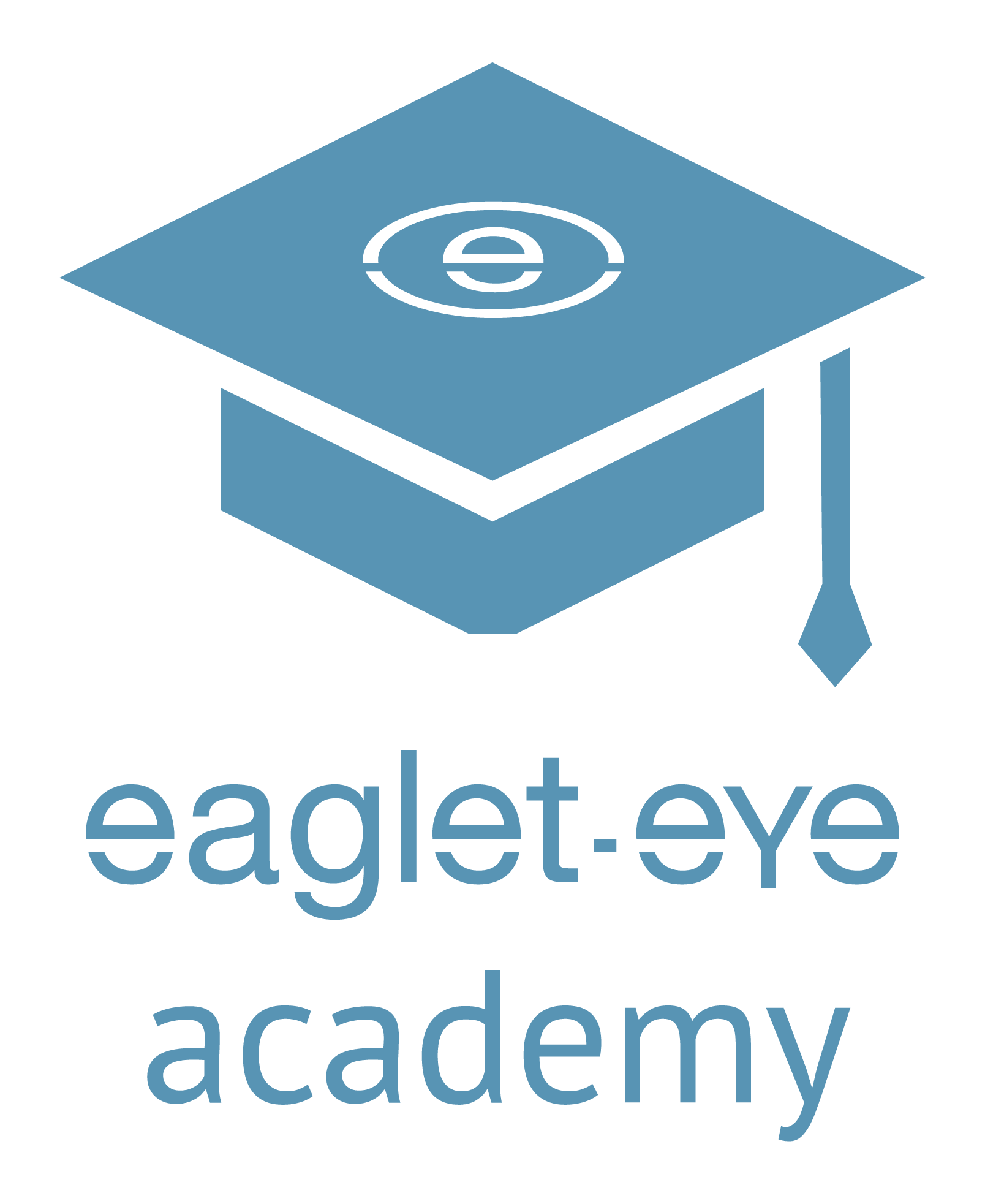
Eaglet Eye Academy
Posters
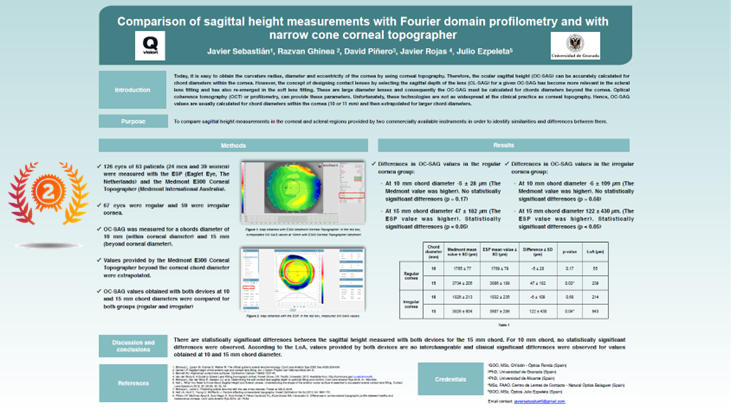
comparison of sagittal height measurements with Fourier domain profilometry and with narrow cone corneal topographer
Javier Sebastián, GOO, MSc; Razvan Ghinea, PhD; David Piñero, PhD; Javier Rojas, MSc, FAAO; Julio Ezpeleta, GOO, MSc
Values provided by both devices are no interchangeable and clinical significant differences were observed for values obtained at 10 and 15 mm chord diameter.
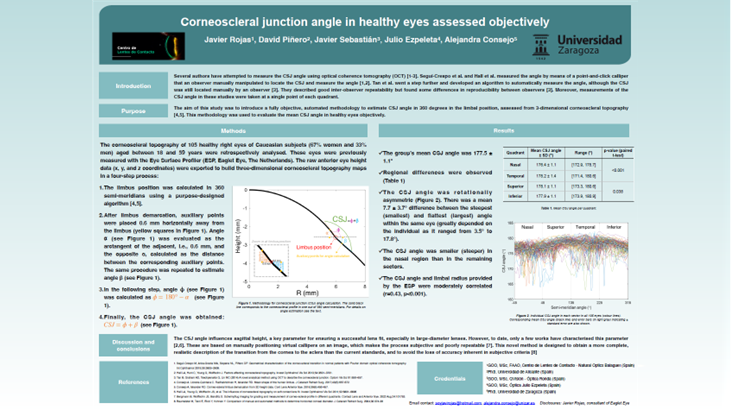
Corneoscleral junction angle in healthy eyes assessed objectively
Javier Rojas, MSc, FAAO; David Piñero, PhD; Javier Sebastián, GOO, MSc; Julio Ezpeleta, GOO, MSc; Alejandra Consejo, PhD
The corneoscleral junction angle influences sagittal height, a key parameter for ensuring a successful lens fit, especially in large-diameter lenses. However, to date, only a few works have characterised this parameter.

A theoretical approach to estimate the impact of the corneo-scleral junction angle on ocular sagittal height.
Reinier Stortelder, BOptom; Javier Rojas GOO, MSc, FAAO; David P. Piñero, PhD
A theoretical model was created to calculate the tangent angle at the end of an asphere of 12 mm. This model establishes differences of 135 and 340 μm for CSJ angle variations of 2 and 5 degrees respectively.

The need for speed
John Samssedi, OD, FAAO; Brian Tompkins, BSc (Hons), FCOptom, FBCLA
Both nystagmus patients showed toricity with the rule and the toricity increases as the chord length increases. As a result, the scleral lens approach for both these patients was the best approach.
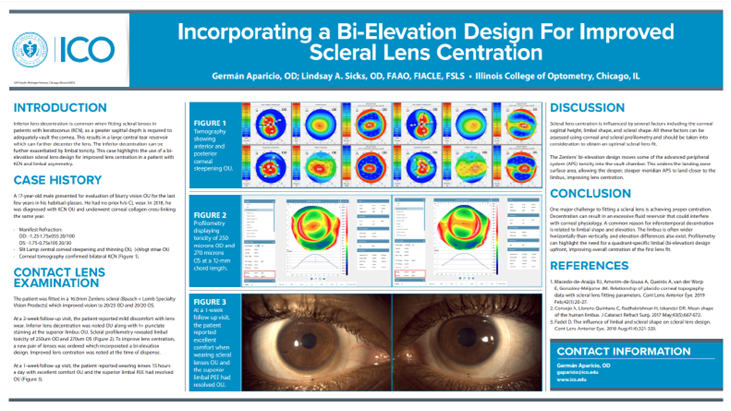
Incorporating a Bi-Elevation design for improved scleral lens centration
Germán Aparicio, OD; Lindsay A. Sicks, OD, FAAO, FIACLE, FSLS
Scleral lens centration is influenced by several factors including the corneal sagittal height, limbal shape, and scleral shape. All these factors can be assessed using corneal and scleral Profilometry.
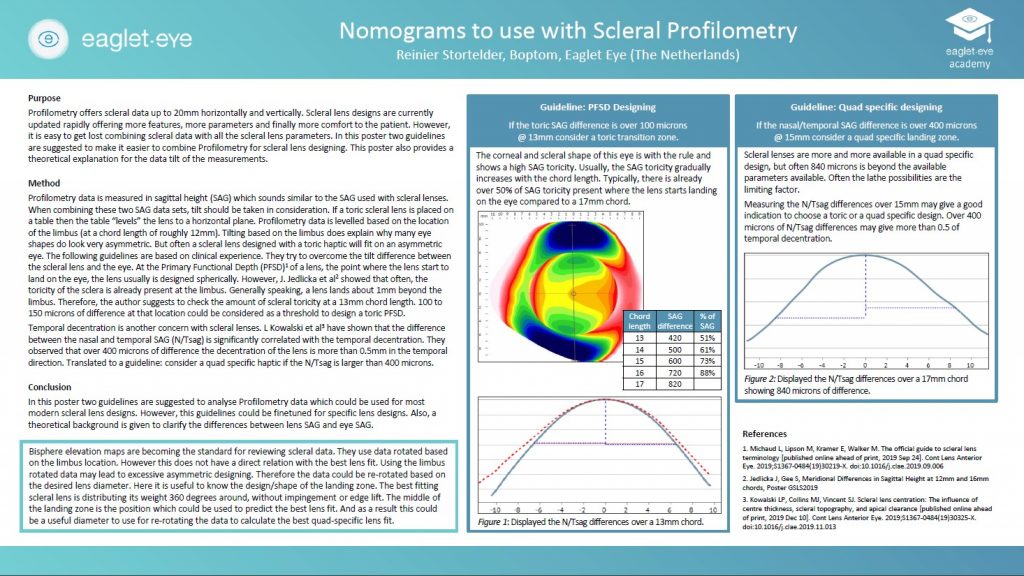
Nomograms to use with Scleral Profilometry
Nomograms to use with Scleral Profilometry
Reinier Stortelder, BOptom
Scleral lens designs are currently updated rapidly offering more features, more parameters and finally more comfort to the patient. In this poster two guidelines are suggested to make it easier to combine Profilometry for scleral lens designing.
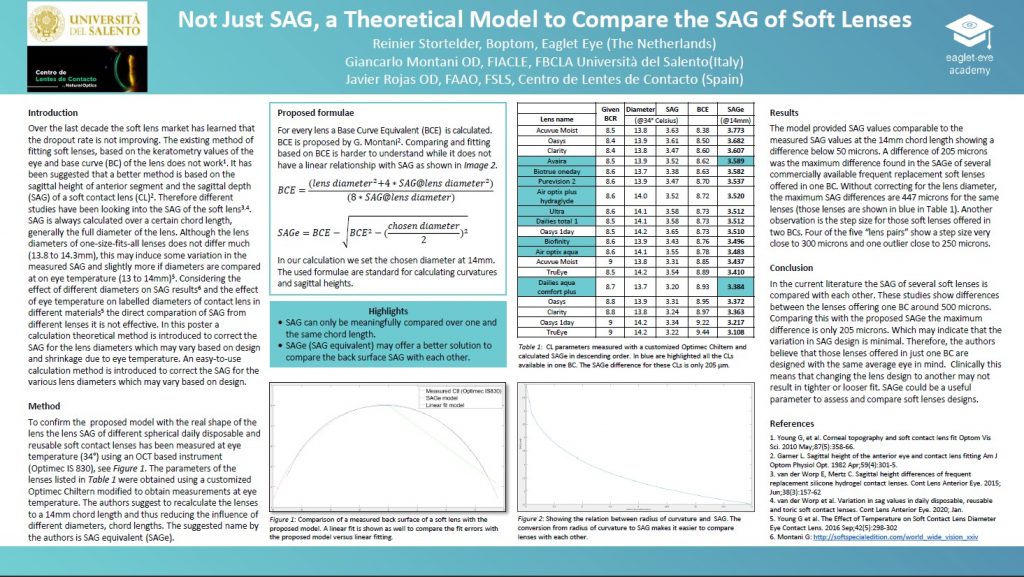
Not Just SAG, a Theoretical Model to Compare the SAG of Soft Lenses
Not Just SAG, a Theoretical Model to Compare the SAG of Soft Lenses
Reinier Stortelder, BOptom; Giancarlo Montani OD, FIACLE, FBCLA; Javier Rojas OD, FAAO, FSLS
Reinier Stortelder, BOptom; Giancarlo Montani OD, FIACLE, FBCLA; Javier Rojas OD, FAAO, FSLS
Over the last decade the soft lens market has learned that the dropout rate is not improving. The existing method of fitting soft lenses, based on the keratometry values of the eye and BC of the lens does not work. An easy-to-use calculation method is introduced.
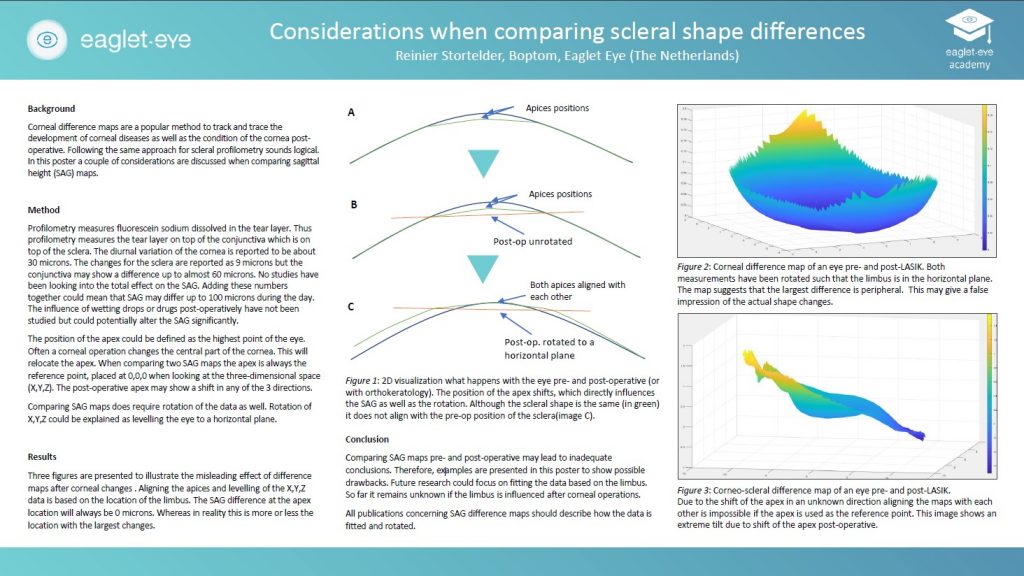
Considerations when comparing scleral shape differences
Reinier Stortelder, BOptom
Corneal difference maps are a popular method to track and trace the development of corneal diseases as well as the condition of the cornea post operative. Following the same approach for scleral profilometry sounds logical. In this poster a couple of considerations are discussed when comparing sagittal height (SAG) maps.
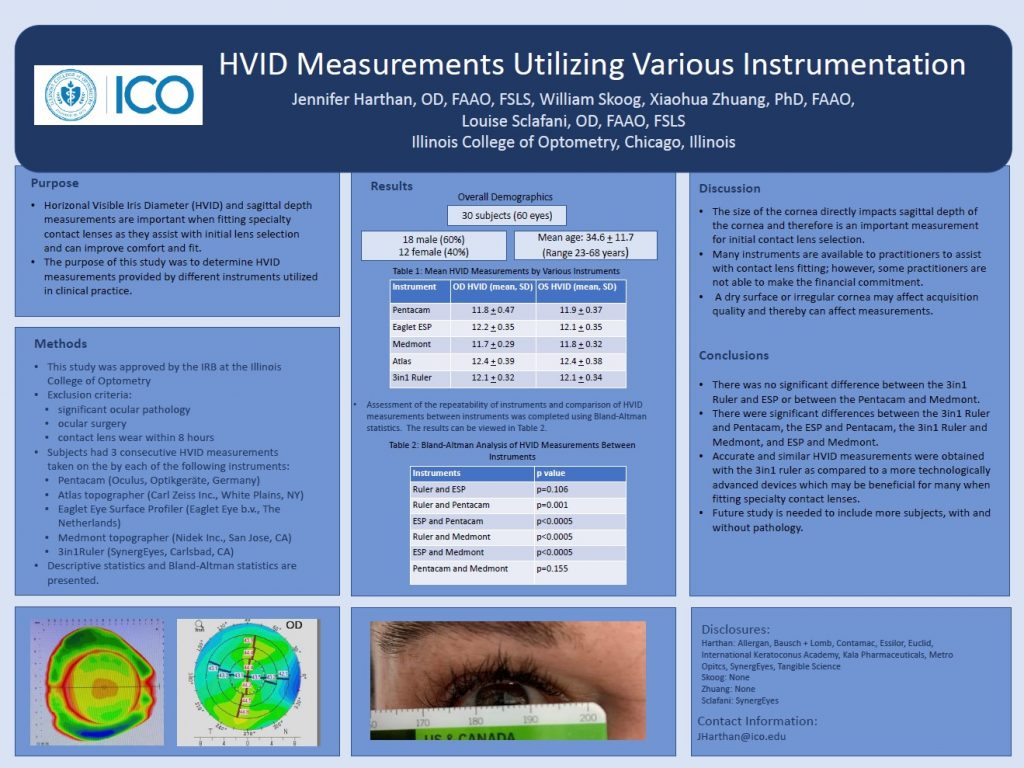
HVID Measurements Utilizing Various Instrumentation
Jennifer Harthan OD, FAAO, FSLS; William Skoog; Xiaohua Zhuang, PhD, FAAO; Louise Sclafani OD, FAAO, FSLS
Horizonal Visible Iris Diameter and sagittal depth measurements are important when fitting specialty lenses as they assist with initial lens selection and can improve comfort and fit. The purpose of this study was to determine HVID measurements provided by different instruments.

Optimizing Soft Lens Fitting: Importance of HVID Versus Corneal Curvature When Choosing a Best Fit Soft Lens
Jason Jedlicka OD, FAAO; Joselyn Dlouhy, OD
In an effort to optimize soft contact lens fitting, we sought to determine which is the more valuable data parameter when selecting an initial lens, corneal curvature or corneal diameter, and the significance or impact of each.
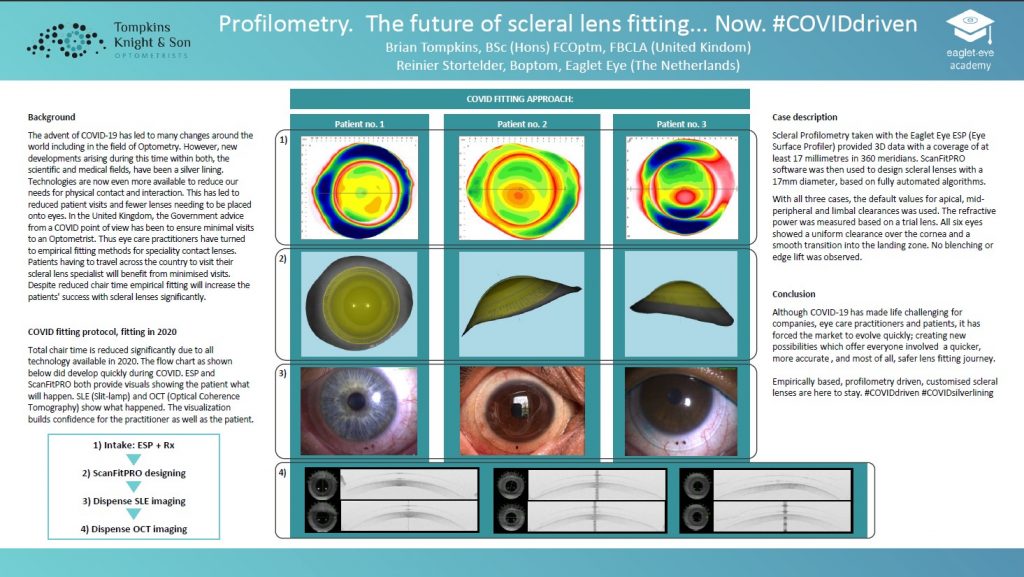
Profilometry. The future of scleral lens fitting... Now. #COVIDdriven
Brian Tompkins, BSc (Hons) FCOptm, FBCLA; Reinier Stortelder, BOptom
The advent of COVID-19 has led to many changes around the world including in the field of Optometry. However, new developments arising during this time within both, the scientific and medical fields, have been a silver lining. Technologies are now even more available to reduce our needs for physical contact and interaction.
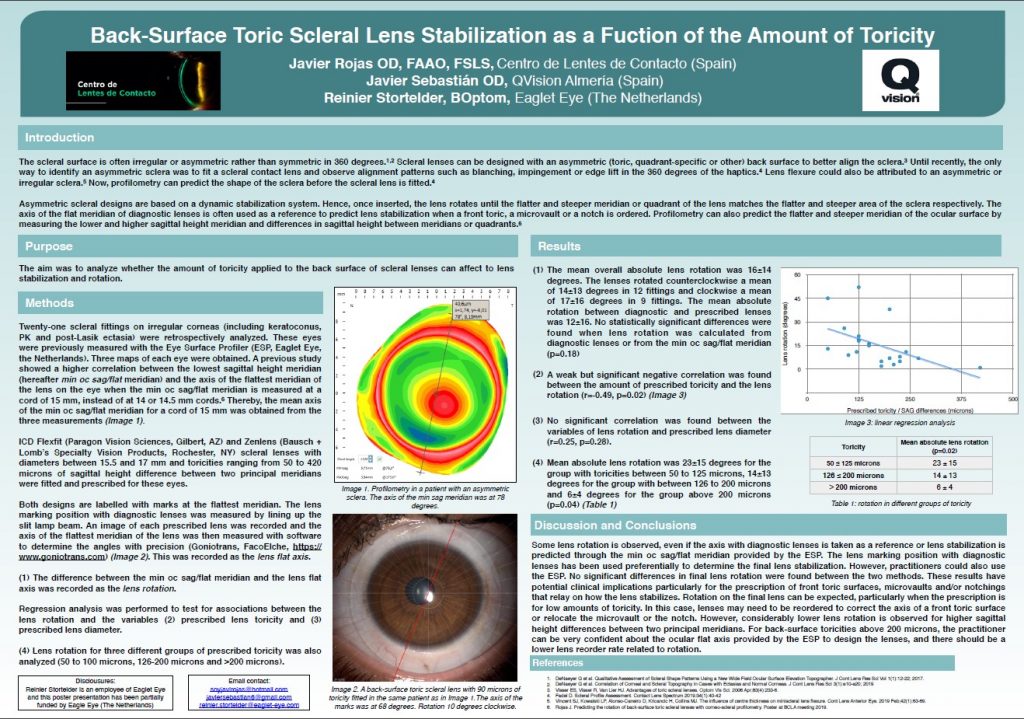
Back-Surface Toric Scleral Lens Stabilization as a Fuction of the Amount of Toricity
Javier Rojas OD, FAAO, FSLS; Javier Sebastián OD; Reinier Stortelder, BOptom
The aim was to analyze whether the amount of toricity applied to the back surface of scleral lenses can affect to lens stabilization and rotation. Twenty-one scleral fittings on irregular corneas (including keratoconus, PK and post-Lasik ectasia) were retrospectively analyzed.
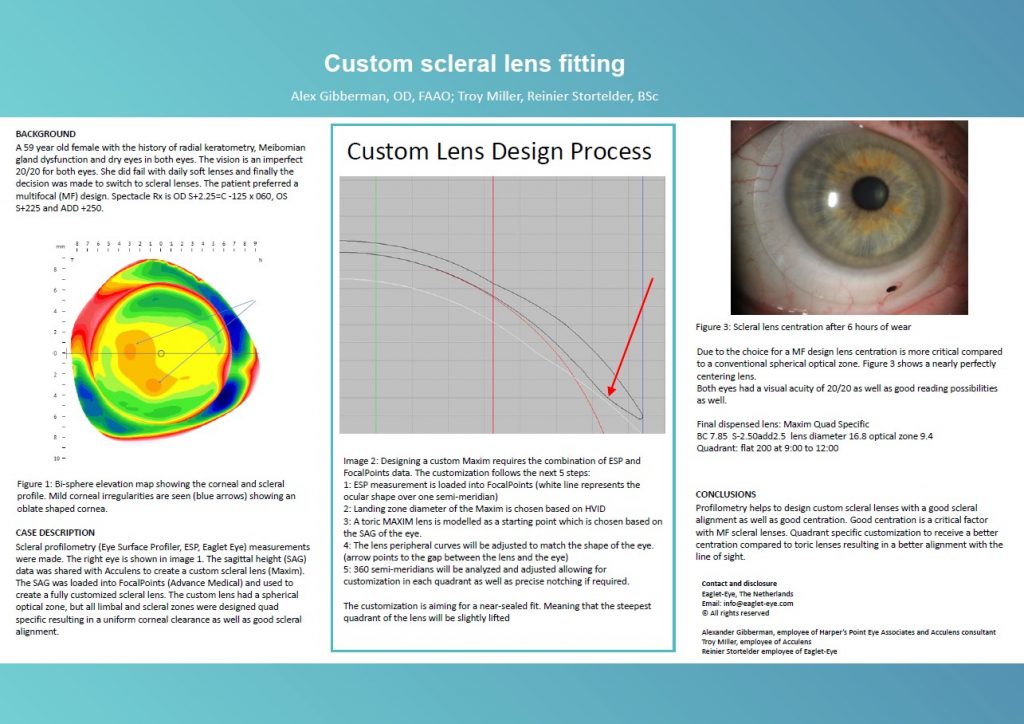
Custom scleral lens fitting
Alex Gibberman, OD, FAAO; Troy Miller; Reinier Stortelder, BOptom
Profilometry helps to design custom scleral lenses with a good scleral alignment as well as good centration. Good centration is a critical factor with multifocal scleral lenses.
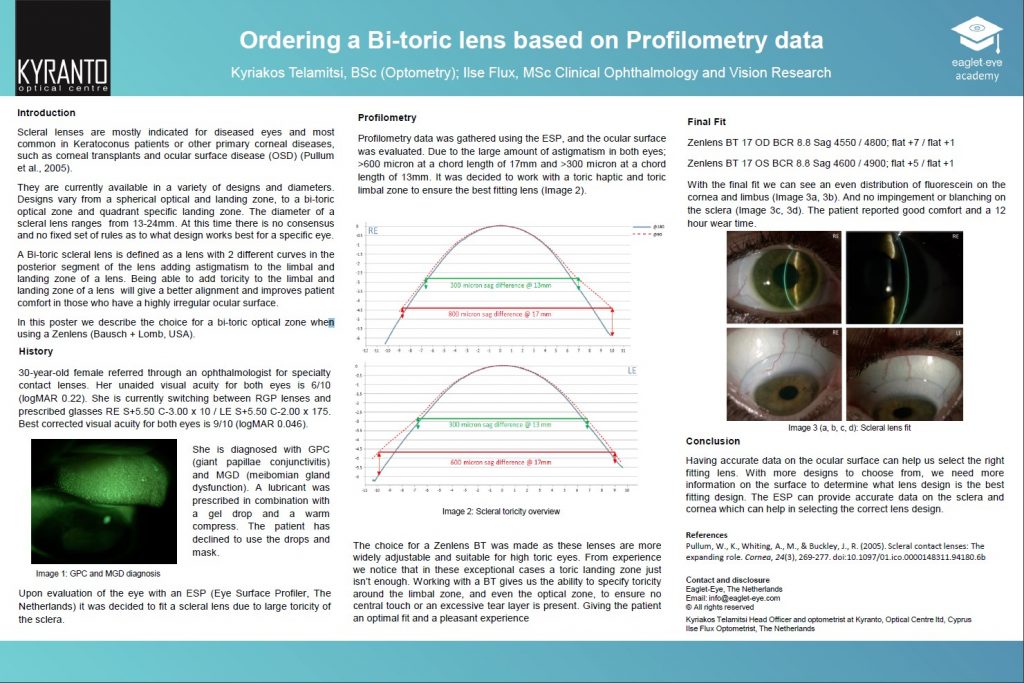
Ordering a Bi-toric lens based on Profilometry data
Kyriakos Telamitsi, BSc; Ilse Flux, MSc
Having accurate data on the ocular surface can help us select the right fitting lens. With more designs to choose from, we need more information on the surface.
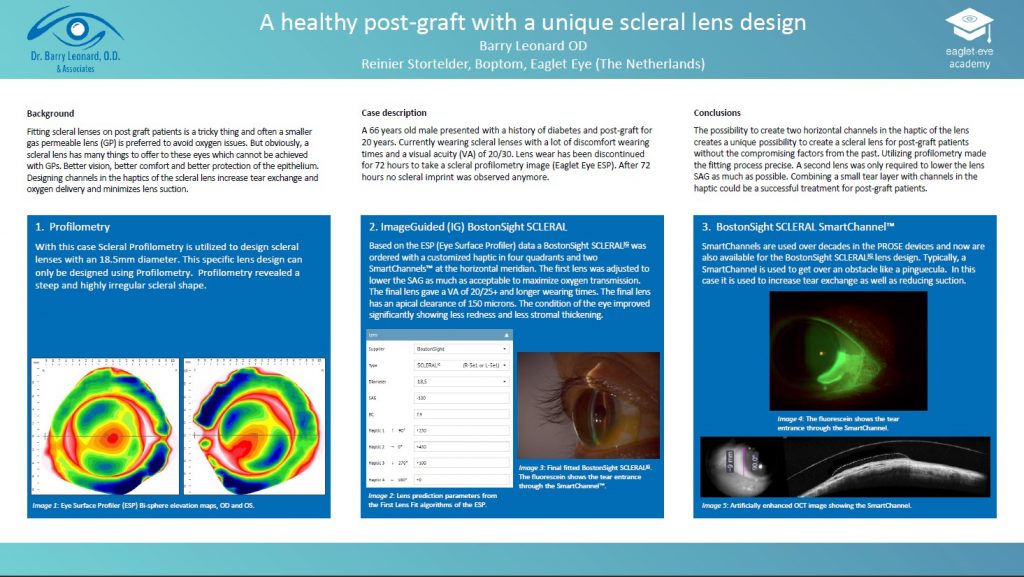
A healthy post-graft with a unique scleral lens design
Barry Leonard OD; Reinier Stortelder, BOptom
Fitting scleral lenses on post graft patients is a tricky thing and often a smaller gas permeable lens is preferred to avoid oxygen issues. But obviously, a scleral lens has many things to offer to these eyes.
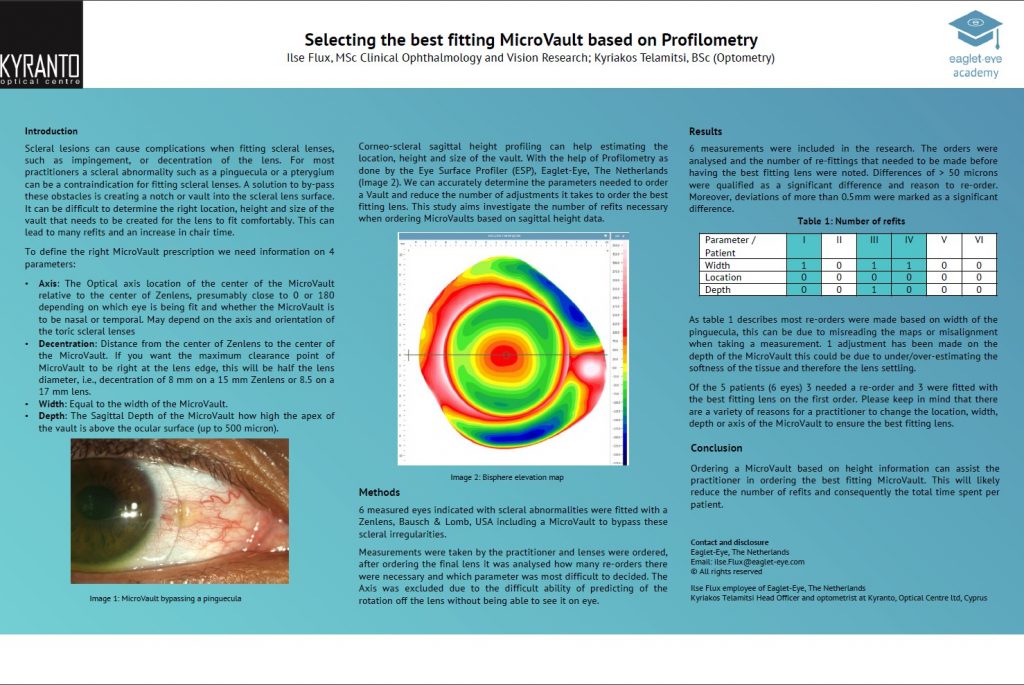
Selecting the best fitting MicroVault based on Profilometry
Ilse Flux, MSc Clinical Ophthalmology and Vision Research; Kyriakos Telamitsi, BSc (Optometry)
Ordering a MicroVault based on height information can assist the practitioner. This will likely reduce the number of refits and consequently the total time spent per patient.
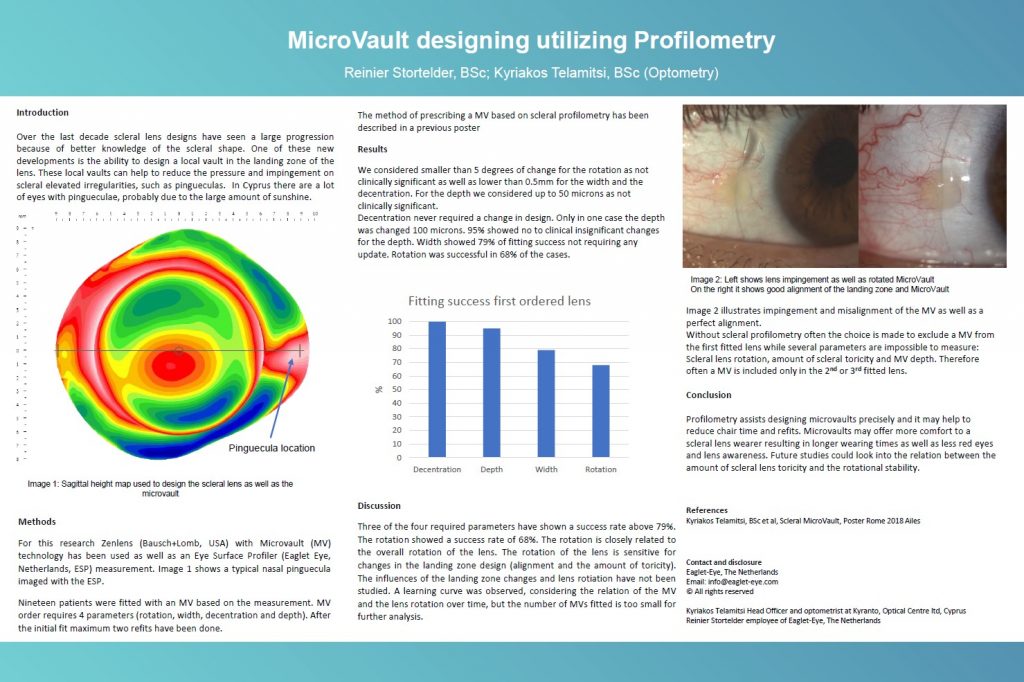
MicroVault designing utilizing Profilometry
Kyriakos Telamitsi, BSc (Optometry); Reinier Stortelder, BOptom
Profilometry assists designing microvaults precisely and it may help to reduce chair time and refits. Microvaults may offer more comfort to a scleral lens wearer resulting in longer wearing times as well as less red eyes and lens awareness.
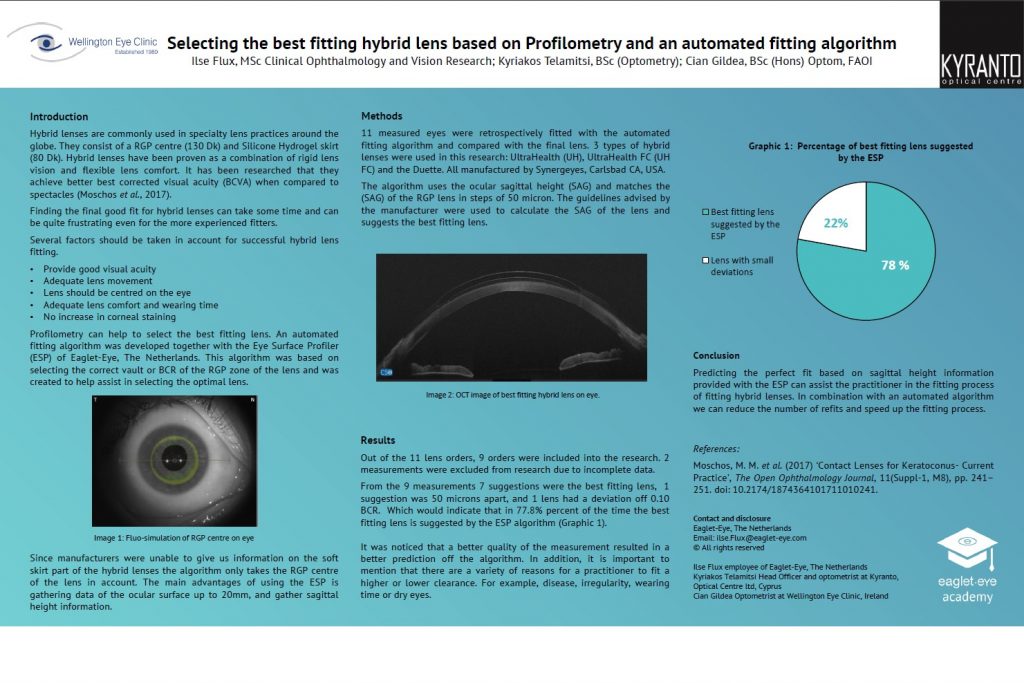
Selecting the best fitting hybrid lens based on Profilometry
Ilse Flux, MSc Clinical Ophthalmology and Vision Research; Kyriakos Telamitsi, BSc (Optometry); Cian Gildea, BSc (Hons) Optom, FAOI
Predicting the perfect fit based on sagittal height can assist in the fitting of fitting hybrid lenses. In combination with an automated algorithm we can reduce the number of refits and speed up the fitting process.
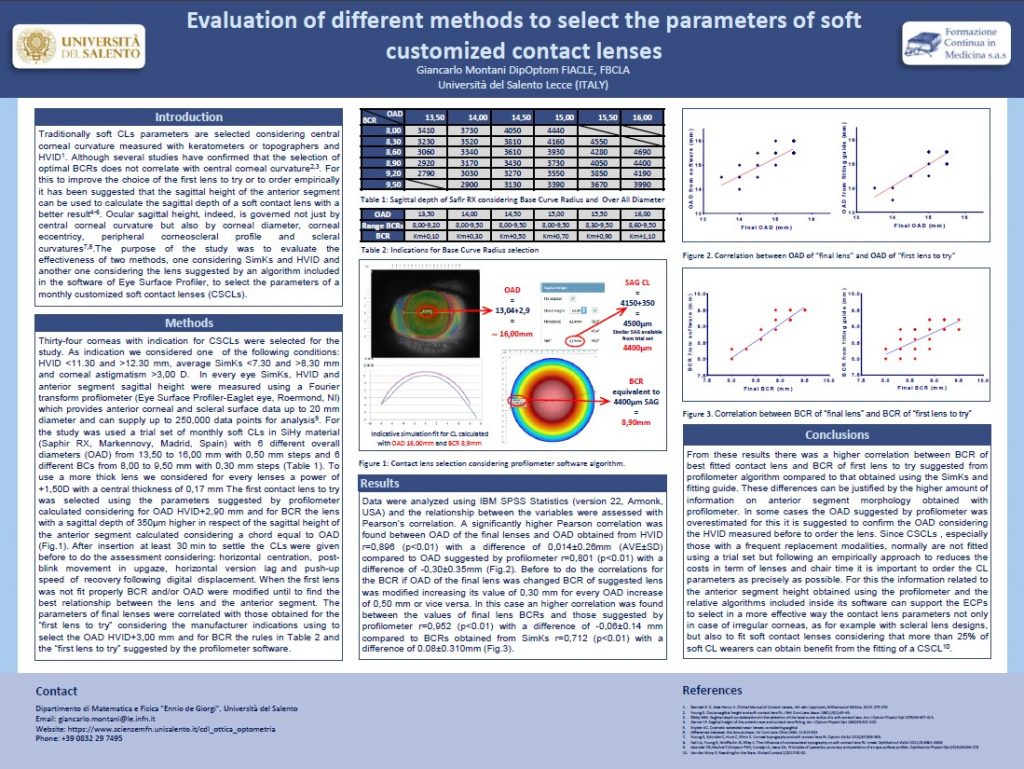
Evaluation of different methods to select the parameters of soft customized contact lenses
Giancarlo Montani DipOptom FIACLE, FBCLA
To improve the choice of the first lens to try or to order empirically it has been suggested that the sagittal height of the anterior segment can be used to calculate the sagittal depth of a soft contact lens with a better result.

Designing a scleral lens with two recesses to avoid two pingueculae
Bradley Richlin, OD; Reinier Stortelder, BOptom
For a patient with a high cylinder subjective refraction a scleral lens is one of the best options to restore vision, but a pinguecula might be a contraindication due to discomfort. New technologies offer more comfort and possibilities to avoid the pinguecula.

